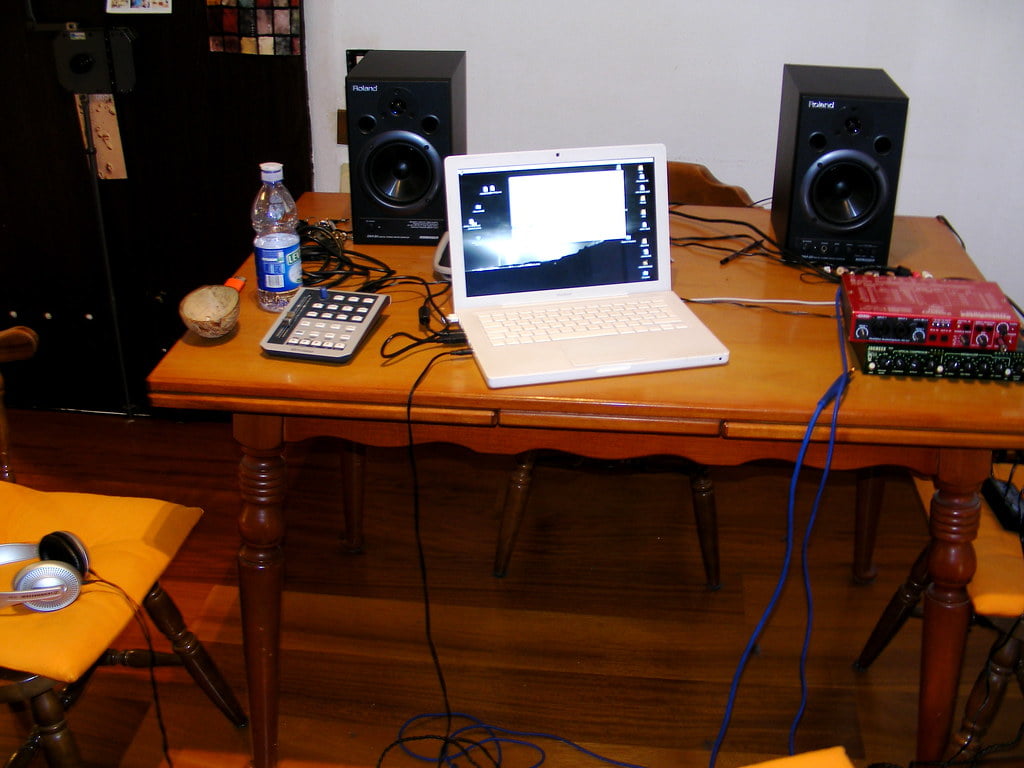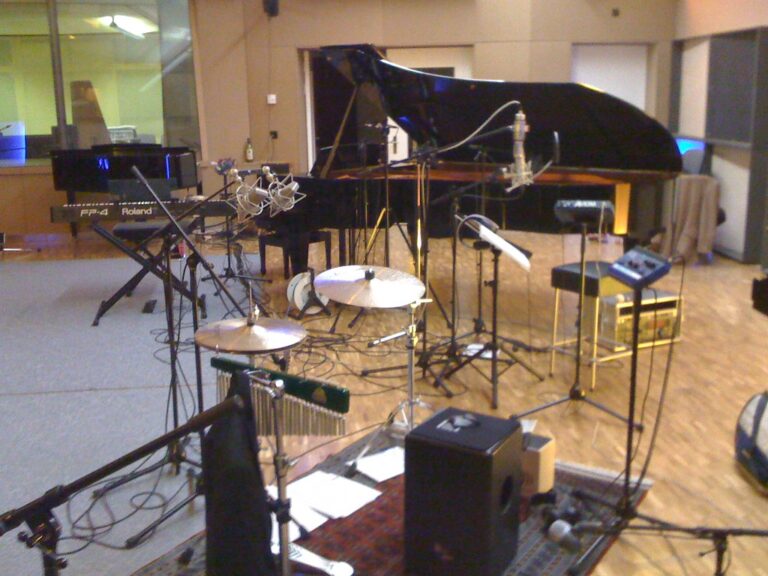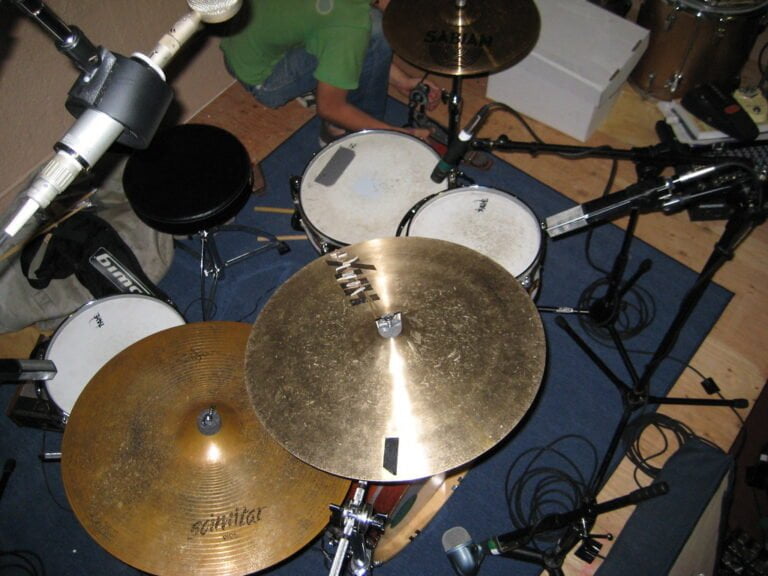Common Mistakes to Avoid in Home Studio Recording
Starting out in my home studio recording journey, I remember positioning my microphone like a lighthouse beacon in a sea of sound, only to realize later the impact it had on my recordings. This simple mistake can make or break the quality of your tracks. But that’s just the tip of the iceberg when it comes to common errors in home studio recording. Want to uncover more pitfalls to avoid and elevate your recording game?
We are supported by our audience. When you purchase through links on our site, we may earn an affiliate commission, at no extra cost for you. Learn more.
Improper Microphone Placement
Improper microphone placement compromises the clarity and balance of recorded sound. When positioning a microphone, it is essential to contemplate various factors to guarantee excellent results. One common issue that arises from improper microphone placement is phase problems. Phase issues occur when multiple microphones capturing the same sound source are not perfectly aligned. This can lead to cancellation or reinforcement of certain frequencies, resulting in a muddy or thin sound in the recordings.
Furthermore, the distance between the microphone and the sound source plays a significant role in capturing room sound. Placing the microphone too close to the source can exaggerate the proximity effect, which boosts bass frequencies, potentially leading to an unbalanced sound. Conversely, situating the microphone too far from the source increases the risk of capturing excessive room sound, which can introduce unwanted reverberation or background noise into the recording.
To avoid these complications, it is important to experiment with different microphone placements, distances, angles, and polar patterns. By fine-tuning the microphone position based on these considerations, you can achieve a well-balanced and clear recording that accurately captures the intended sound without introducing phase issues or unwanted room sound.
Neglecting Room Acoustics
Room acoustics play a critical role in shaping the overall quality of recordings by influencing sound reflections and reverberations. Neglecting room acoustics can result in poor recording quality due to unwanted noise and coloration caused by uncontrolled sound reflections. To address this issue, it is essential to take into account implementing proper room treatment solutions such as acoustic panels, diffusers, and bass traps. Acoustic panels are designed to absorb sound waves, reducing reflections and minimizing echoes in the room. Diffusers scatter sound waves to create a more balanced acoustic environment, while bass traps help control low-frequency reverberations, ensuring a cleaner sound recording.
Investing in professional room treatment can be expensive, but there are effective do-it-yourself (DIY) alternatives available for home studio setups. By optimizing room acoustics, recording environments can be tailored to provide a more controlled and accurate sound reproduction, enhancing the overall recording quality. It is crucial to recognize the significance of room acoustics in the recording process and prioritize creating an acoustically sound environment to achieve the best results in home studio recordings.
Overusing Effects
When using effects in home studio recordings, moderation is key to maintaining the natural clarity and integrity of the sound. Overusing effects can obscure the original quality of the recording and result in a muddied mix. It is important to strike a balance between enhancing the audio with effects and preserving its clarity.
Heavy reliance on effects can pose challenges in achieving transparency in the audio. To combat this, consider recording clean, unprocessed audio as a foundation before applying any effects. By starting with a pristine sound, you set yourself up for success in producing a polished final product.
Using effects sparingly for minor enhancements rather than drowning the audio in excessive processing. Subtle touches can elevate the quality of the recording without compromising its clarity. Focus on maintaining the original musicality and clear tonality of the sound throughout the production process.
Cheap Cables
To guarantee peak sound quality in home studio recordings, the significance of investing in quality cables cannot be overstated. The cables you use play a critical role in the overall sound quality of your recordings. Opting for cheap cables may seem like a cost-effective choice, but it can have detrimental effects on the outcome of your audio projects.
Cheap cables are prone to introducing unwanted distortion and noise into your recordings. This interference can compromise the clarity and fidelity of your audio, ultimately affecting the overall sound quality. Remember that the quality of cables impacts the entire recording chain, from your microphones to your audio interface and monitors. Cutting corners on cables can lead to a chain reaction of poor sound quality throughout your setup.
Investing in reliable cables is important for ensuring a clean and professional audio recording. High-quality cables help maintain a high standard of audio performance in your home studio, ensuring that your recordings are free from unwanted artifacts and interference. By prioritizing the quality of your cables, you can elevate the overall sound quality of your recordings and produce professional-grade audio projects.
Working Excessively
Excessive work in the home studio recording process can lead to burnout and diminish creative output. Overworking not only increases the likelihood of burnout but also impacts productivity and the quality of recordings. Fatigue from overworking can cloud decision-making abilities, resulting in subpar outcomes. To maintain utmost productivity and prevent overexertion, it is important to establish boundaries and incorporate breaks into the recording process.
Balancing work with sufficient rest is important for sustaining motivation and inspiration in home studio recording. Without proper breaks and time for relaxation, the risk of burnout rises, potentially leading to a decrease in the quality of work produced. Prioritizing quality over quantity is paramount in preventing the compromise of the final outcome due to excessive work. By recognizing the importance of pacing oneself and avoiding overworking, individuals can make sure that their creative energy remains consistently high throughout the recording process.







